This week, Marvel is addressing one of the pressing issues of our day with a look at school shootings and their aftermath in Champions #24. Plus, flash back to World War II with Sergeant Fury and his Howling Commandos in Journey Into Mystery: The Birth of Krakoa #1, and check in on Reed, Sue, and the gang with Fantastic Four #2. Don’t miss the latest installment of The Marvel Rundown!
Champions #24
Written by Jim Zub
Art by Sean Izaakse
Colored by Marcio Menyz and Erick Arciniega
Lettered by Clayton Cowles
Alexander Jones: AJ, Joe, the Champions are taking on gun violence in this week’s issue. Is this the right venue for social issues? Did the book have anything to say about the topic? More importantly, was it any good?
AJ Frost: Hey, lads of the Rundown. This week’s issue of Champions did something that comics have been doing since the beginning, which is to juxtapose the power of superheroes with the weaknesses and horrors of contemporary society. The effects of this narrative technique are usually all over the place, this week’s issue did an admirable (but sometimes clumsy) job of bringing attention to how high school heroes would react—emotionally and psychologically—when a school shooting takes place.
Joe Grunenwald: I know there are those who disagree but I absolutely believe comics like this are the right venue for social issues to be addressed, and there are few bigger than the threat of gun violence. That said, there are limitations to what superhero comics can achieve when dealing with real world issues like this—it would be disingenuous for a superhero to ‘solve’ the problem of gun violence when there are no easy fixes in the real world—and I think, within the framework of those limitations, Champions #24 acquitted itself well.
Jones: I liked certain aspects of the issue but don’t feel Champions #24 had anything substantial to say about the topic. I can point to some recent comics that had a more interesting take on social issues than this title did. Deathstroke and X-Men Red are two superhero books that have interesting takes on the current political climate and social issues that service the story. I’m not sure Champions is willing to go deeper than the surface level and in an issue as weighty as gun violence, I think we can do better. I do understand that this was supposed to have the tone of an after-school special but dear lord did I think it was cheesy.
Frost: That’s why I say the delivery of the message was a little clumsy. The heart is all there and the writer’s intentions are in the right place, but the read on school shootings and gun violence survivor’s guilt wasn’t explored in a way that felt visceral. It’s not hard to see that there is some hypocrisy going on here, because a lot of the big Marvel books are built on the back of blustering gunplay and blood n’ gore action. But “Cause Comics” have their place in the pantheon too. I only wish that the creative team had more space to play up the emotional ramifications here, rather than tie everything up in a nice-ish bow.
Grunenwald: On the specific topic of gun violence, the motivations and contributing factors that lead to shootings, I agree that this comic didn’t have anything substantial to say, and in that respect it wasn’t what I was expecting. This issue seems much more focused on the anxiety that living in a world with the looming threat of gun violence causes, which is something we don’t see very often in comics (particularly, as AJ mentioned, comics where guns often play a large role in the action). I don’t know about you two but that anxiety is something I’ve thought about in a general sense but never seen portrayed as plainly as it is here, and I appreciated that aspect of the issue being brought to the forefront.
Jones: I respect and appreciate where both of you are coming from, but I think this is sloppy at best. This was exactly what I expected it to be and had the plot of a sitcom from decades ago. There are so many comics, Big Two and all, that pepper in biting social critique that I think we should strive for more.
Frost: While reading this issue, I thought back to the Batman tale “Seduction of the Gun” from the early ’90s. Gun violence has always been pervasive and the disturbing lack of movement towards a safer nation for all is a real fear. My only question is: How does the story presented before us bring something new to the table? Again, all the emotions are in the right place (the “Trigger Warning” title is apt), but, in the end, what do these heroes do? Alex is right about the “After-School Special” feel to the book, but those usually end with something being accomplished. Here, I’m not sure what is achieved except for Miles Morales getting some inspiration to keep on doing his Spider-Man work (though I enjoyed every Ms. Marvel/Spider-Man scene).
In this end, this is a piece of entertainment that is meant to get readers to think and engage with the zeitgeist. It’s a delicate balance. I only wish that there was something more for readers to take away from this issue than the message that, as a nation, we need to do better.
Jones: I agree with that.
Grunenwald: I’m curious about what you guys think could have been accomplished here. What did you guys want from this story?
Frost: Honestly… I don’t know. And it is so difficult to say because these ink and paper avatars of our moral compasses can only do so much in the confines that the publisher and editorial staff dictate. Whatever happens in these pages usually can’t translate into the real world. I suppose I just wanted there to be more emphasis on the macro level of building a movement to stop school shootings, rather than focus on the team dynamic of Miles feeling guilty for his non-action. While that’s an interesting route to explore character-wise, Miles’ moping around distracts from what he could be doing with his powers: political engagement, civic engagement, etc. Superheroes are harbingers for good in so many ways, but why not push them more in directions that will inspire and help create meaningful change? I don’t know if you guys agree with this sentiment.
Jones: I have read so many comics that pushed politics to the limit. Lots of Young Animal titles and new Vertigo series have been challenging in some of the ideas they are conveying. Those titles are not as mainstream as Champions but books like the aforementioned X-Men Red are. I wanted a more nuanced look at this issue and a call to action. I definitely agree with AJ. We have a role to play if we are passionate about these issues and Champions #24 fails to communicate these larger ideas.
Frost: I don’t want to fault Jim Zub for doing a good job at creating a story with a commendable message.
Grunenwald: I wonder if this is a ‘damned if you do, damned if you don’t’ situation. If the issue addresses certain aspects of the situation and offers general thoughts, it gets criticized for not doing enough; if the issue goes deeper in and tries to provide a call to action, like you’re suggesting, then it gets criticized for being too preachy. It’s a delicate line to walk.
Frost: Exactly.
Jones: The art is good. The characters are charming. The issue has a good message. But books like Scarlet and Bordertown just came out and showed me how progressive comics can be. I’m not saying Champions is even bad, but I know I’ve read better.
Frost: And Image’s Where We Live anthology did a good job at describing the pain that gun violence causes in a way that is more real. There are so many avenues to explore, and I just feel that this issue—because of elements out of its control—just couldn’t explore them all in the limited space.
Grunenwald: That’s totally fair, and, believe me, I would have loved to read a ‘call to action’ version of this story. Unfortunately at the end of the day these are corporately-owned characters in a 20-page story, so there are inherent limitations to what they can do and what they can say.
Frost: A totally valid point.
Jones: Deathstroke is an in-continuity superhero title that pushes the medium of comics to the limit.
Grunenwald: I’ve never seen Deathstroke on a lunchbox at Walmart. It’s just a different animal.
Frost: This is probably part of a larger conversation, so we might need to bracket it.
Grunenwald: Yeah, you’re probably right. I hear everything you’re saying, Alex, and I don’t disagree with you.
Jones: I like how Zub blended the different cast members from Ms. Marvel and Miles’ solo series. Sean Izakse’s art was also very good. He’s definitely a creator to watch.
Grunenwald: I liked seeing those characters as well. It was nice to see Goldballs again, though I wish it had been under better circumstances. Miles not having an ongoing series right now probably gave Zub some flexibility with what he could do with the supporting cast. And I agree, Izakse’s art was solid.
Jones: What are your final thoughts on the issue?
Frost: I think, and I hope this is right, that this book is a BROWSE. It has an important message to tell. I only wish it had more space to advocate.
Grunenwald: I agree with the BROWSE assessment. I think it does what it sets out to do fine, but whether or not that’s enough or what you’re looking for in a comic is entirely a personal call.
Jones: I would say SKIP. I don’t think the issue is bad I just don’t think there’s any major reason someone should read it.
Final Verdict: Joe and AJ say BROWSE, while Alex says SKIP!
Note: If you do read this issue and it inspires you to take action in stemming the tide of gun violence, please visit www.marchforourlives.com for information on what you can do to help.
 Journey Into Mystery: The Birth of Krakoa #1
Journey Into Mystery: The Birth of Krakoa #1
Written by Dennis Hopeless
Illustrated by Djibril Morissette-Phan
Colored by Rachelle Rosenberg
Lettered by Travis Lanham
Reviewed by AJ Frost
Perhaps because we are inundated (bombarded, maybe) with horrific images of war, picking up a comic centered on wartime is not the first place one might go for entertainment. Sure, pure war comics—as in, those not having to do with a certain Captain—have a long history, but they’ve been out of fashion for a while (Sheriff of Babylon notwithstanding). While there may not be a revitalization in the genre anytime soon, Marvel’s reintroduction of Journey Into Mystery might be the motivation to use the storied anthology title to cultivate top talent to create interesting one-off stories that are perfect for casual readers, or readers who are looking for something off the beaten path.
The World War II-era tale spun in this issue of Journey Into Mystery is contemporary pulp at its finest. With Dennis Hopeless on writing duty, he presents a straightforward tale of Sergeant Fury and his Howling Commandos as they crash land on the cryptic “island” of Krakoa where, of course, many strange and supernatural horrors await them. Being a one-shot, readers won’t have to know the history of the Howling Commandos to appreciate all the weirdness that is happening here. The dialogue, in particular, is pitch-perfect, capturing the patter of world-weary military men thrown into a bizarre situation. And these aspects not only strengthen the book, but they allow it to veer off into territory that—while not exactly groundbreaking—is tonally dissimilar to much of what Marvel is producing at the moment.
And for those who feel they know the entire history of Krakoa and its role in the Marvel Universe, there are many surprises to be had. But my lips are sealed!
Hopeless’s peculiar tale wouldn’t be as effective without the gorgeous art of Djibril Morissette-Phan, who merges classic brashness with a contemporary sheen; everything is boxy, yet the framing is modern. Rachelle Rosenberg, as usual, ups the ante with her gorgeous coloring work, opting for secondary colors to disorient and add to the surreality of the book.
Journey Into Mystery is the type of book that Marvel likes to throw as a curveball every now and then. This adventure off the beaten path is refreshing and exciting, and will offer readers a nice distraction from the typical superhero story.
Verdict: This is a BUY. Take your mind off the stresses of the world and enjoy a good ol’ fashioned adventure story!
 Fantastic Four #2
Fantastic Four #2
Written by Dan Slott
Illustrated by Sara Pichelli
Colored by Marte Gracia
Inked by Sara Pichelli with Elisabetta D’Amico
Lettered by VC’s Joe Caramagna
Reviewed by Alexander Jones
Let’s face it: Fantastic Four #1 was a pretty slow start to the series. While the issue teased a couple great revelations for both Ben and Johnny, readers got precious few moments with the heroes they’ve really been waiting for. I think it is safe to say Fantastic Four #2 is the issue that really hits the gas and immediately shows readers what the Richards family has been up to. Author Dan Slott and artist Sara Pichelli both do an excellent job homaging the franchise’s history by bringing back not only the four, but most of the recent supporting cast members of the title as well. The title has a wonderfully light energy and a great sense of humor dispersed evenly among the cast members. This installment of the title is going to be a particular delight to huge fans of the franchise frothing at the mouth to get all their fan-favorite Marvel heroes back.
Slott even sets up an interesting status quo for the heroes as it currently stands. The problem this issue doesn’t solve is resolving why the four have been off-planet for so long without telling Ben and Johnny. Slott may not be able to resolve this plot thread in a satisfactory manner next issue, but the delightful sense of humor and energy allows for readers to overlook the plot hole relatively easily. Slott doesn’t just build on what previous creators have crafted with the series; he adds a few new characters to the world and even explores aspects of the heroes that have never been touched on before. Valeria has grown up slightly, making her interactions with Reed more fascinating than ever before. There is a natural sense of progression in the issue building from past work.
Sara Pichelli’s artwork in the issue is jaw-dropping. Her approach to the antagonist brings out the best sensibilities of her artwork. Pichelli is particularly great at drawing detailed, dynamic figures. Her characters are rarely standing still and do an excellent job conveying a sense of movement. There are a lot of heroes in the issue and on the last page each cast member stands out and strikes an excellent pose. Pichelli is one of the best artists currently working at Marvel, and the issue’s level of quality and motion feels confident and effortless. On pages where there are fewer figures, she adds something interesting to the page so nobody is ever sitting still or looking boring. Fantastic Four #2 is fluid, fun and easy to read and Pichelli’s work on the issue is a huge reason why.
The cliffhanger in the issue brings even more questions and intrigue into the interactions going forward. I don’t know how the status quo is going to be resolved, but Slott and Pichelli’s work is so confident I have no doubt it will be resolved with care. If Fantastic Four #2 carries any major flaw, it is only in the structure itself. Marvel should have either bundled the first two issues of the series together to calm the reservations of fans, or shuffled the structure around to make this entry come first. Fantastic Four #2 feels like a first issue and does an excellent job introducing each member of the cast and filling the issue with an unabashed sense of delight. From every conceivable metric of quality, Fantastic Four #2 is excellent.
Next week: Wolverine returns! Really! Maybe! Or…at least…starts…to return!


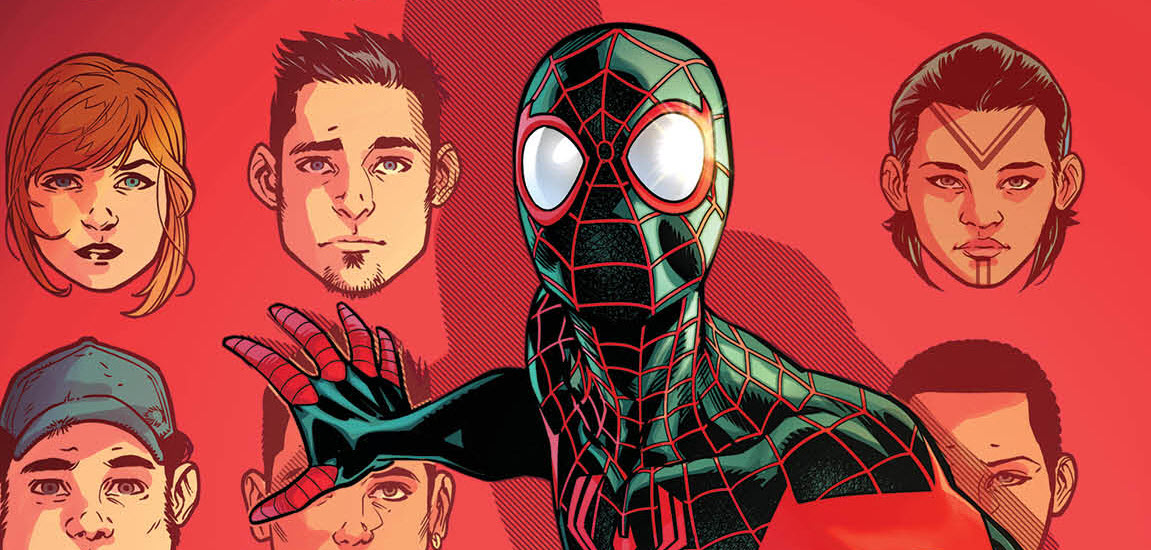
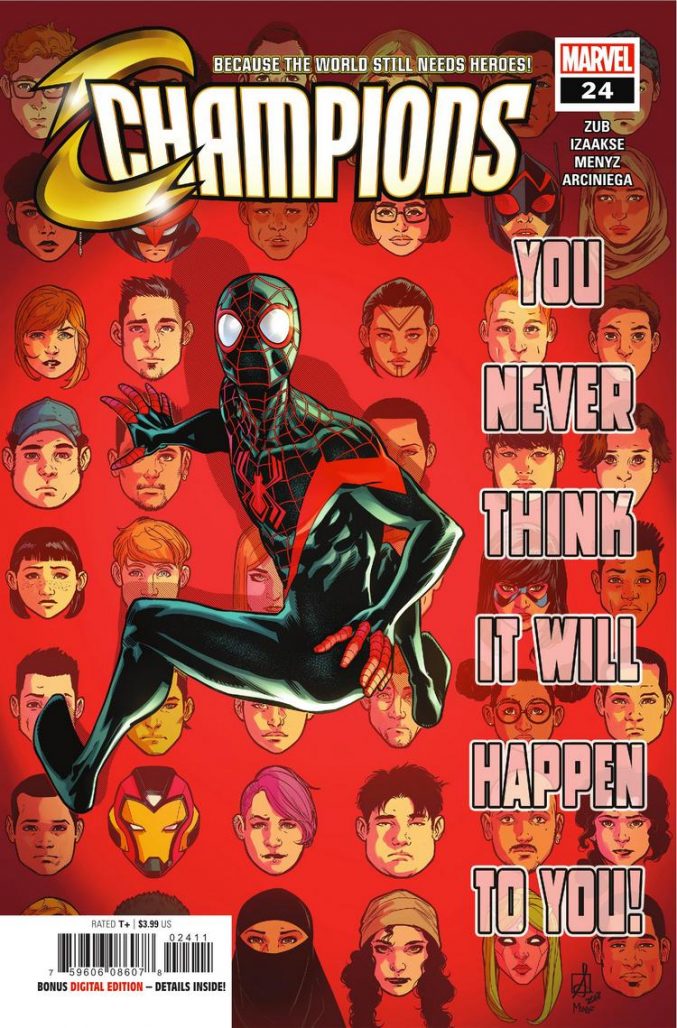

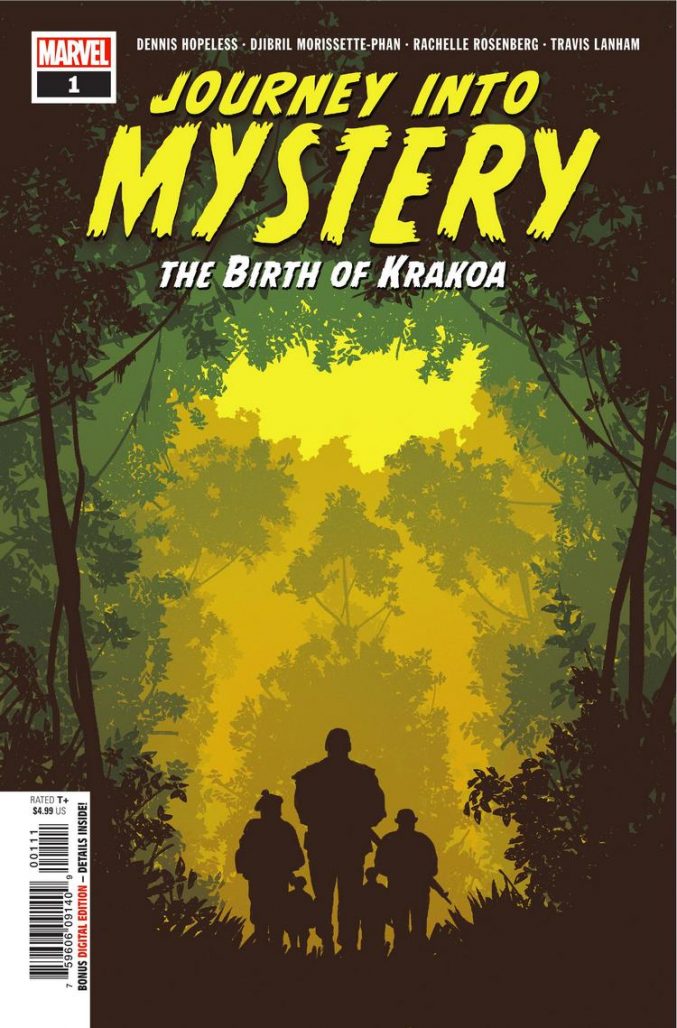

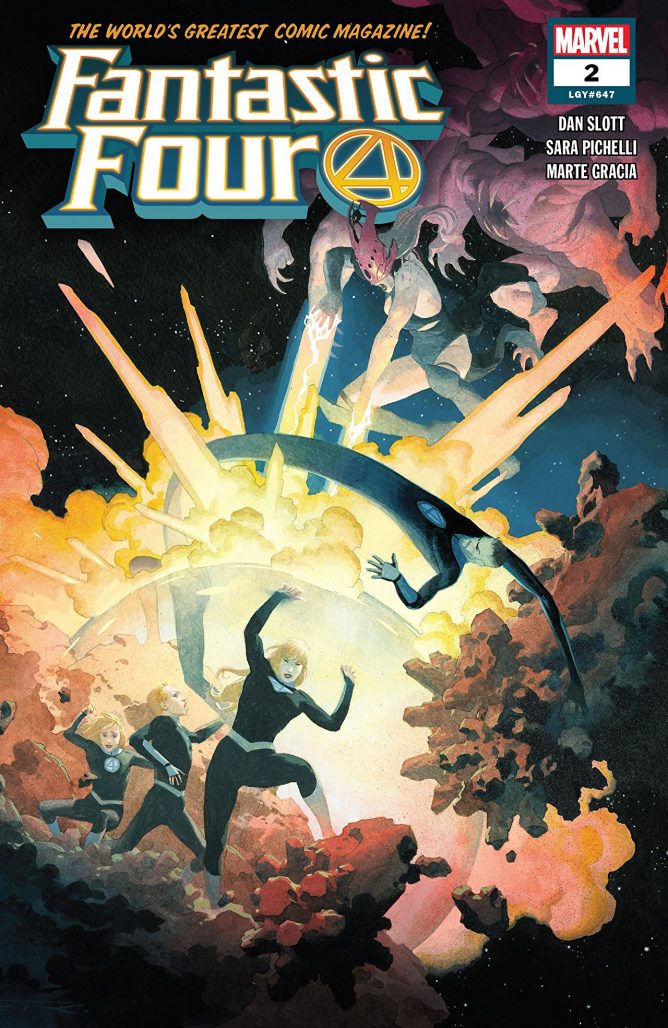



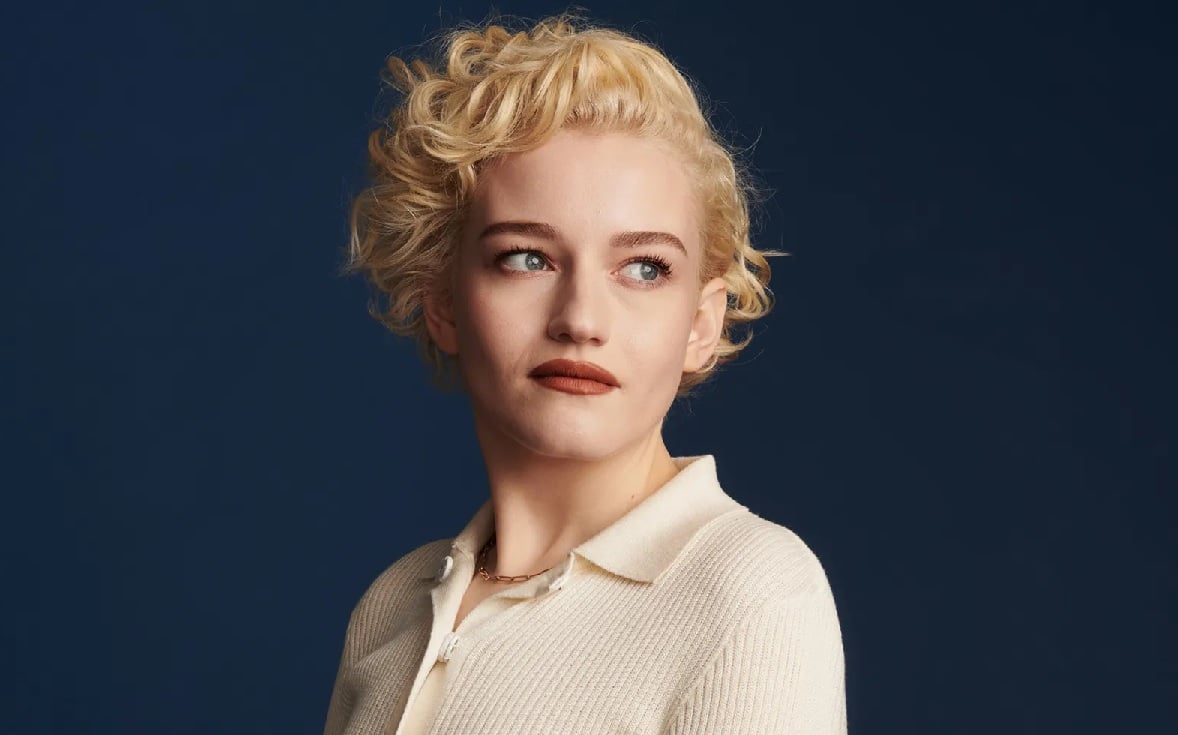



I like the cover to that JIM. Be good to read this
Comments are closed.